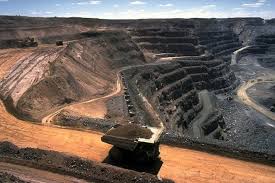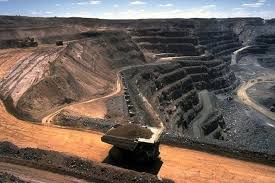
The oil and gas industry conditions are just right for Donald Trump if he wants to bring America’s coal industry back.
Coal is made more competitive in the power sector as natural gas prices are higher than a year ago. Prices for metallurgical coal used in steelmaking are boosted by China’s trimming its own production. And suggesting this bruised and battered industry may be on the mend is e fact that America’s output is up 15 percent from 2016.
However it may be a vow impossible to meet if one tries to Bottom of Form
bring jobs back to levels anywhere near the sector’s heyday. The burden of environmental regulations can be lifted on coal companies by Trump and open up federal lands for mining. But analysts at the CERAWeek by IHS Markit energy conference said in a panel that stoking fresh demand for the fossil fuel in an era of cheap, bountiful shale gas will be key. And even if that were to happen, it was decades ago, when companies developed technologies to mine more tons with fewer workers, that the link between U.S. coal production and jobs started fraying.
“The largest coal employment losses have been concentrated in the production areas of the U.S. that are the least efficient,” said Robert Godby, a professor of energy economics at the University of Wyoming. “We could see an increase of coal production and still see a decrease in coal jobs.”
According to the Mine Safety and Health Administration, noting the lowest in data going back to 1978, total U.S. coal jobs plunged to 53,000 last year. West Virginia alone was home to 126,000 miners back in the 1940s, when some workers still carried picks and shovels into the pits.
Trump vowed repeatedly to get more coal mines opened while on the campaign trail. According to the MSHA, noting one-seventh of the total in 1978, reporting employment in the fourth quarter of 2016 were 1,028 U.S. coal mines and facilities.
Thanks to the rising price of metallurgical coal, with a handful of Appalachian mines opening, there has been progress on that front. Ramaco Resources Inc. plans to open two more this year after it opened its Elk Creek mine in West Virginia in December. a new operation in Pennsylvania as early as May is being started by Corsa Coal Corp.
“Just like any administration, President Trump will take credit for that,” said Matt Preston, a research director at the consulting firm Wood Mackenzie. “But how long that lasts probably has more to do with what China wants to do than what we do here.”
With production of cheap, low-sulfur coal began booming because of the Clean Air Act and cheaper shipping rates which led to the exacerbating of job losses by the emergence of the Powder River Basin play of Wyoming and Montana. With coal seams as high as 60 feet (18 meters), near the surface, coal there comes in giant seams. And with very few workers, and in the open pits, electric shovels can claw 400 tons -- the equivalent of 30 school buses -- at a time.
“If you really wanted to stop coal-mining employment losses, you’d increase coal production in Appalachia, but that just doesn’t happen for economic reasons,’’ Godby said. “Expansion will occur in the most automated areas where costs are lowest. And the Powder River Basin has always been very automated.’’
“Trump has been successful in getting rid of regulation that would have hurt coal down the road,” Ted O’Brien, senior director of capital markets and marketing at XCoal Energy & Resources LLC, said in an interview at the CERAWeek conference.
And yet, Trump “hasn’t done anything that’s going to bring demand up to a point that you’re going to have an effort to bring coal jobs back into the U.S.,” O’Brien said
(Source:www.bloombrg.com)
Coal is made more competitive in the power sector as natural gas prices are higher than a year ago. Prices for metallurgical coal used in steelmaking are boosted by China’s trimming its own production. And suggesting this bruised and battered industry may be on the mend is e fact that America’s output is up 15 percent from 2016.
However it may be a vow impossible to meet if one tries to Bottom of Form
bring jobs back to levels anywhere near the sector’s heyday. The burden of environmental regulations can be lifted on coal companies by Trump and open up federal lands for mining. But analysts at the CERAWeek by IHS Markit energy conference said in a panel that stoking fresh demand for the fossil fuel in an era of cheap, bountiful shale gas will be key. And even if that were to happen, it was decades ago, when companies developed technologies to mine more tons with fewer workers, that the link between U.S. coal production and jobs started fraying.
“The largest coal employment losses have been concentrated in the production areas of the U.S. that are the least efficient,” said Robert Godby, a professor of energy economics at the University of Wyoming. “We could see an increase of coal production and still see a decrease in coal jobs.”
According to the Mine Safety and Health Administration, noting the lowest in data going back to 1978, total U.S. coal jobs plunged to 53,000 last year. West Virginia alone was home to 126,000 miners back in the 1940s, when some workers still carried picks and shovels into the pits.
Trump vowed repeatedly to get more coal mines opened while on the campaign trail. According to the MSHA, noting one-seventh of the total in 1978, reporting employment in the fourth quarter of 2016 were 1,028 U.S. coal mines and facilities.
Thanks to the rising price of metallurgical coal, with a handful of Appalachian mines opening, there has been progress on that front. Ramaco Resources Inc. plans to open two more this year after it opened its Elk Creek mine in West Virginia in December. a new operation in Pennsylvania as early as May is being started by Corsa Coal Corp.
“Just like any administration, President Trump will take credit for that,” said Matt Preston, a research director at the consulting firm Wood Mackenzie. “But how long that lasts probably has more to do with what China wants to do than what we do here.”
With production of cheap, low-sulfur coal began booming because of the Clean Air Act and cheaper shipping rates which led to the exacerbating of job losses by the emergence of the Powder River Basin play of Wyoming and Montana. With coal seams as high as 60 feet (18 meters), near the surface, coal there comes in giant seams. And with very few workers, and in the open pits, electric shovels can claw 400 tons -- the equivalent of 30 school buses -- at a time.
“If you really wanted to stop coal-mining employment losses, you’d increase coal production in Appalachia, but that just doesn’t happen for economic reasons,’’ Godby said. “Expansion will occur in the most automated areas where costs are lowest. And the Powder River Basin has always been very automated.’’
“Trump has been successful in getting rid of regulation that would have hurt coal down the road,” Ted O’Brien, senior director of capital markets and marketing at XCoal Energy & Resources LLC, said in an interview at the CERAWeek conference.
And yet, Trump “hasn’t done anything that’s going to bring demand up to a point that you’re going to have an effort to bring coal jobs back into the U.S.,” O’Brien said
(Source:www.bloombrg.com)





